Abstract
Reported are updated data on poliomyelitis surveillance in Bombay for the period 1982-87 and estimates of the efficacy of oral poliovaccine (OPV) calculated by the case exposure method, using two approaches. The first, a screening technique that used only data on the reported number of doses of vaccine administered and the immunization status of all poliomyelitis cases, appeared to underestimate the true vaccine efficacy. In the more rigorous second technique, which used data for children of the same age group, geographical areas, and study year, obtained from immunization coverage surveys, and information on the immunization status of poliomyelitis cases, the results indicate that the OPV vaccine efficacy for fully immunized children aged 12-23 months exceeded 90%. These findings show that the estimated efficacy of OPV is high in Bombay and that, in general, vaccine efficacy should be re-estimated using more rigorous techniques if preliminary screening estimates indicate a lower than expected efficacy. In Bombay, poliomyelitis therefore results primarily from a failure to fully vaccinate all eligible children rather than as a result of vaccine failure. Furthermore, the age distribution of cases suggests that the strategy of focusing immunization activities on children aged under 1 year is epidemiologically correct.
Full text
PDF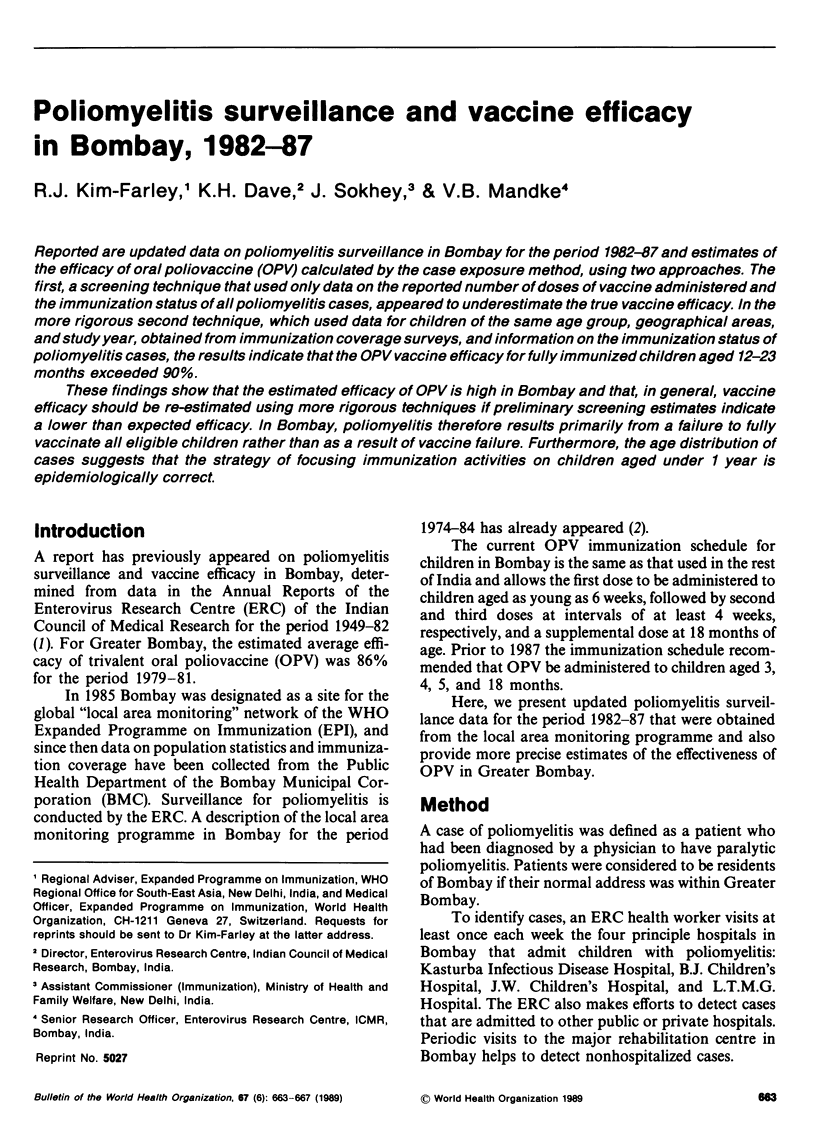
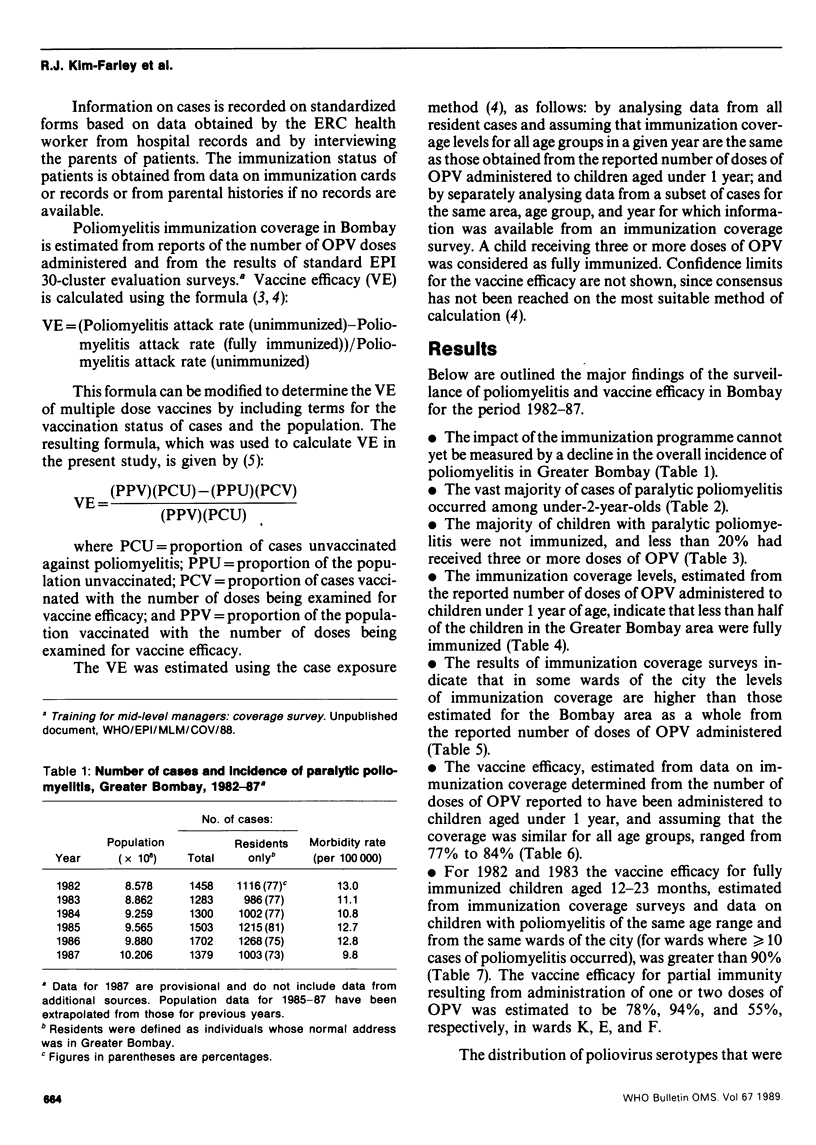
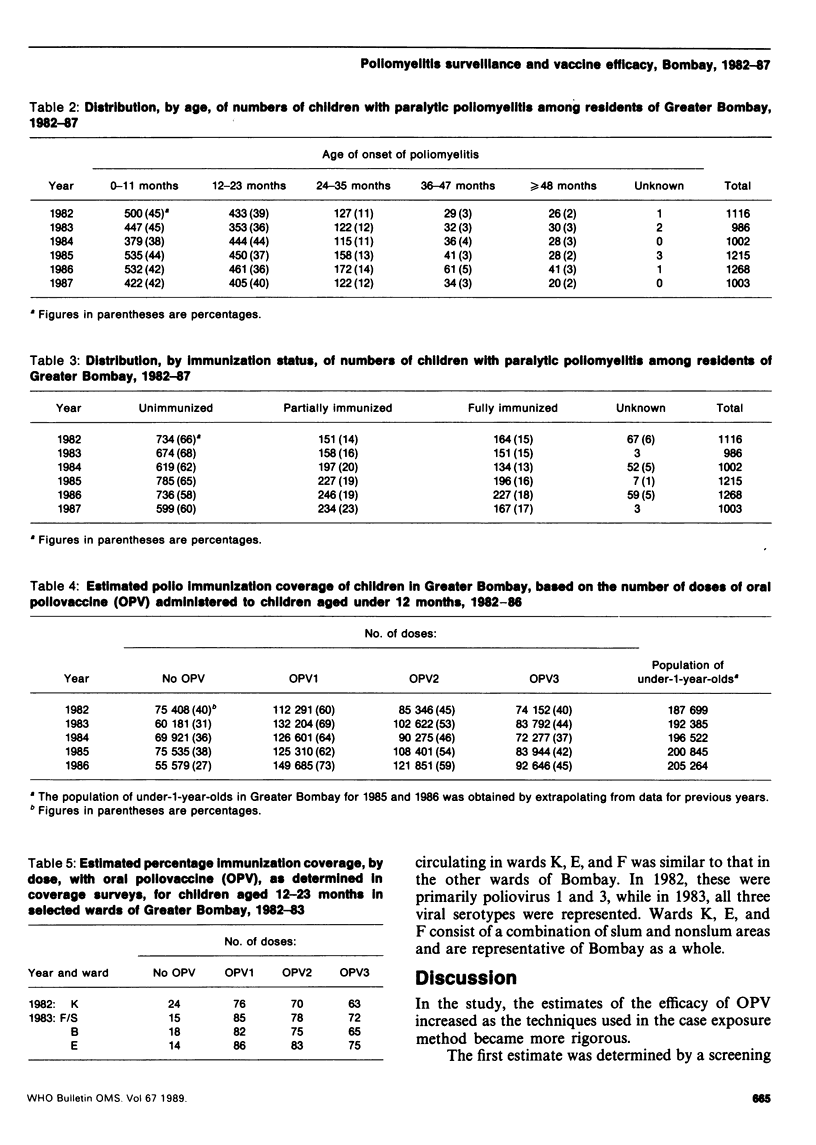
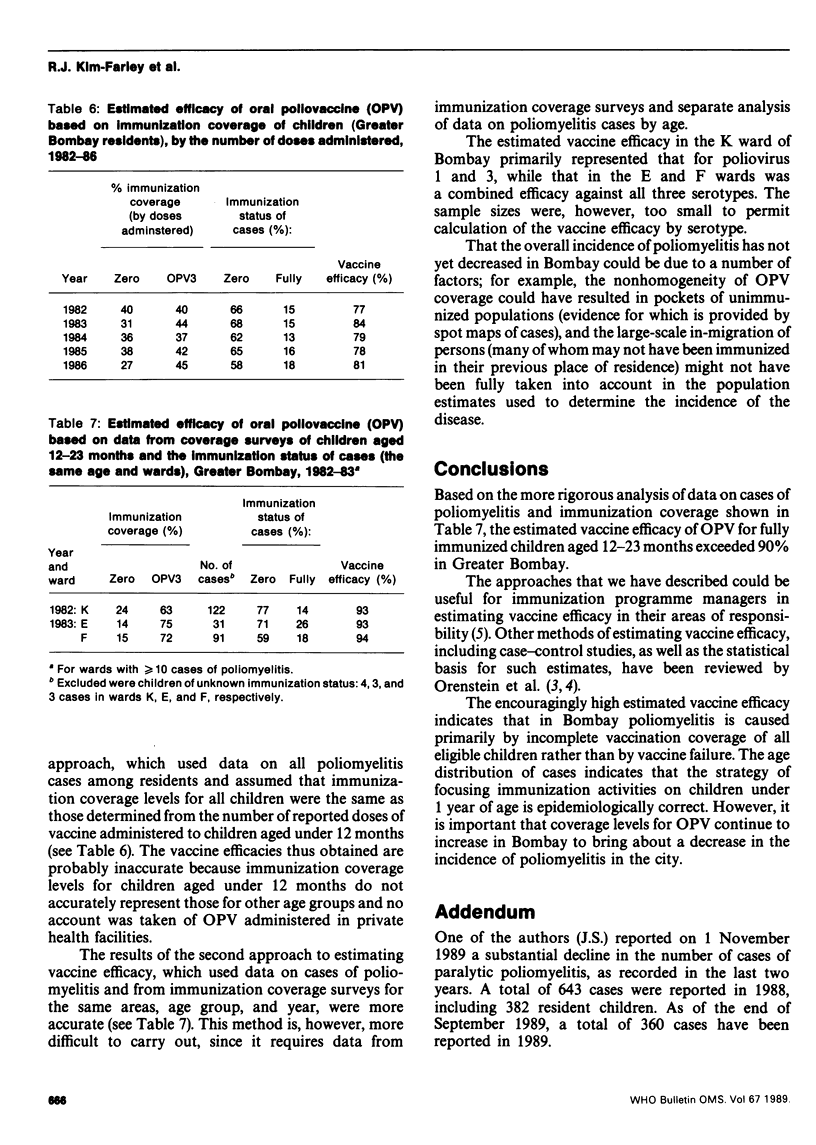
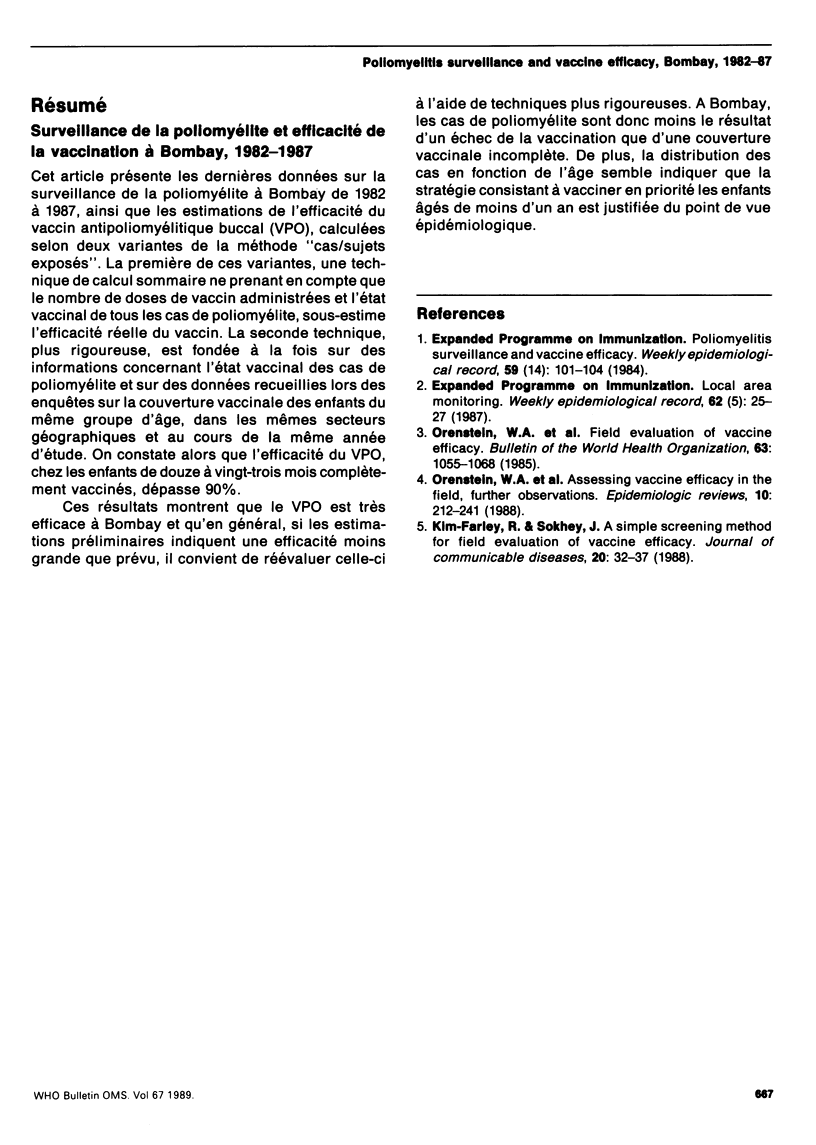
Selected References
These references are in PubMed. This may not be the complete list of references from this article.
- Kim-Farley R., Sokhey J. A simple screening method for field evaluation of vaccine efficacy. J Commun Dis. 1988 Mar;20(1):32–37. [PubMed] [Google Scholar]


